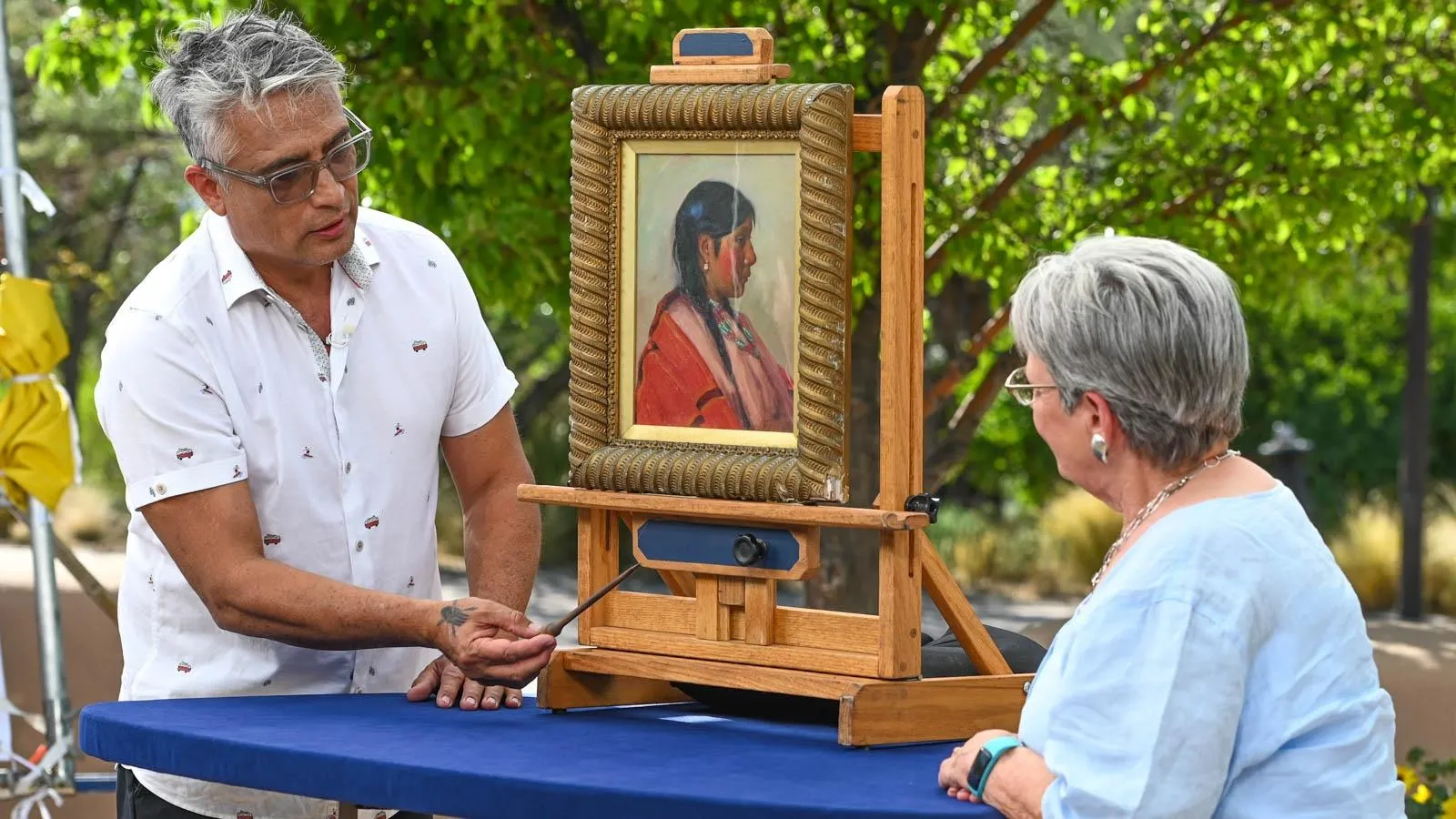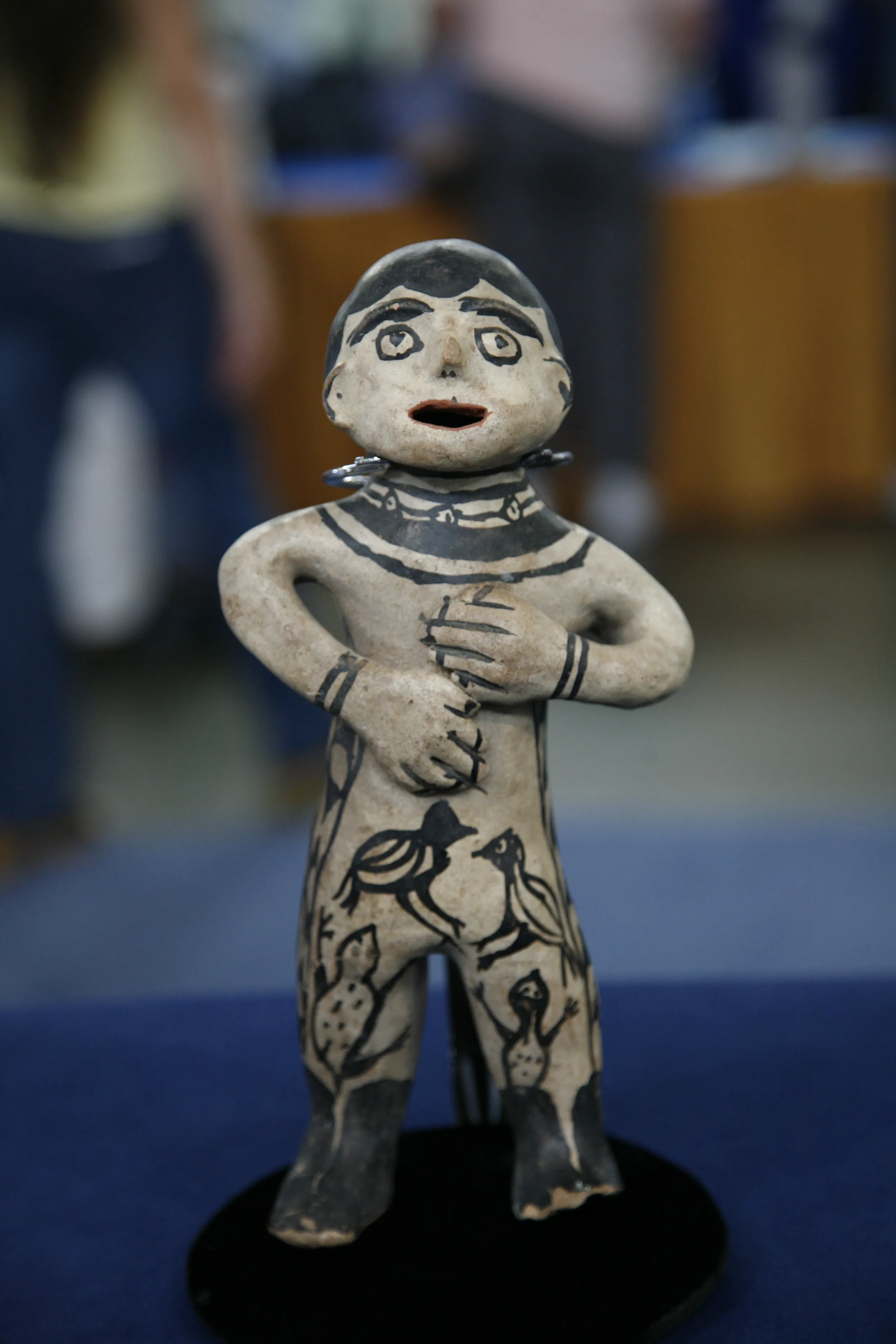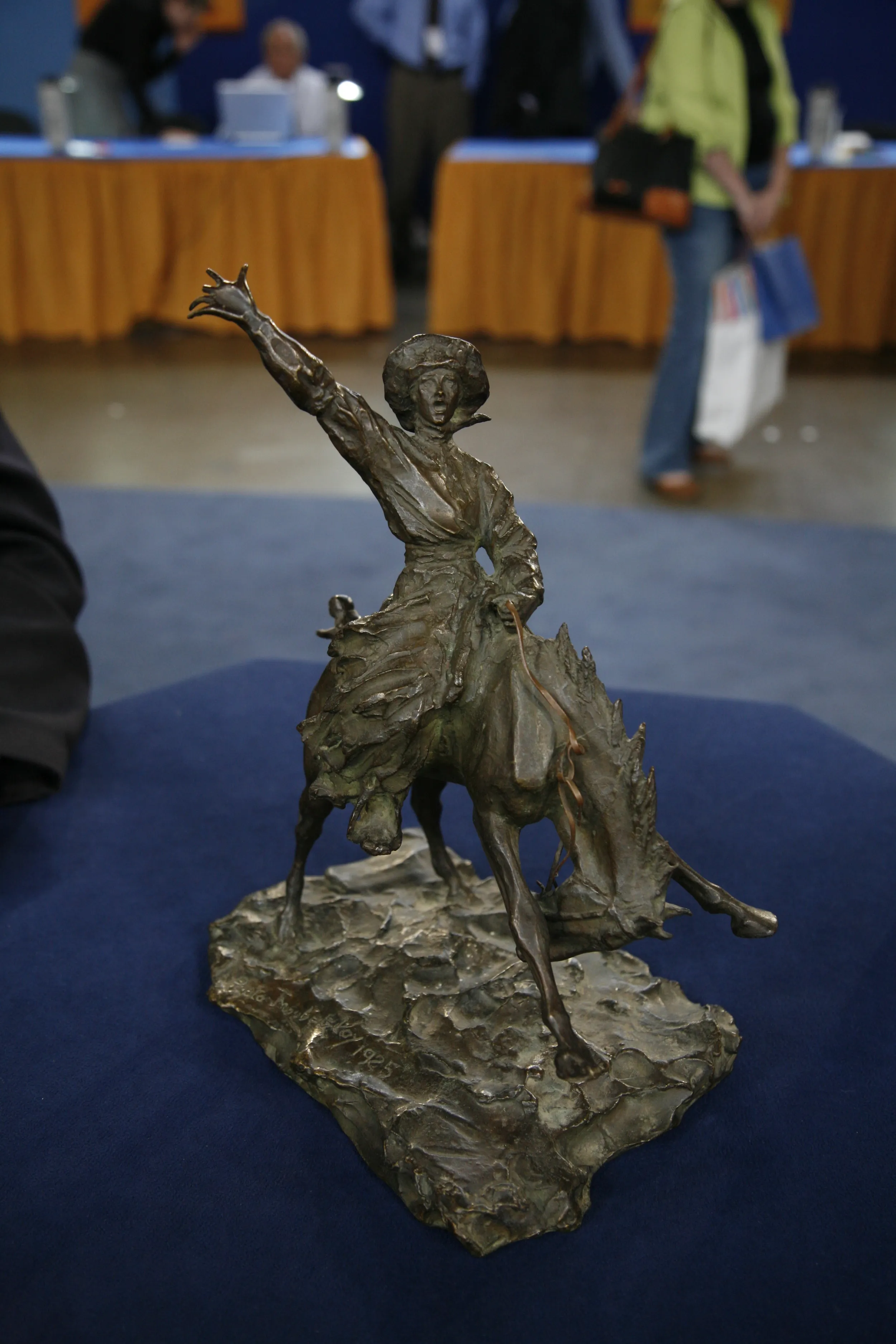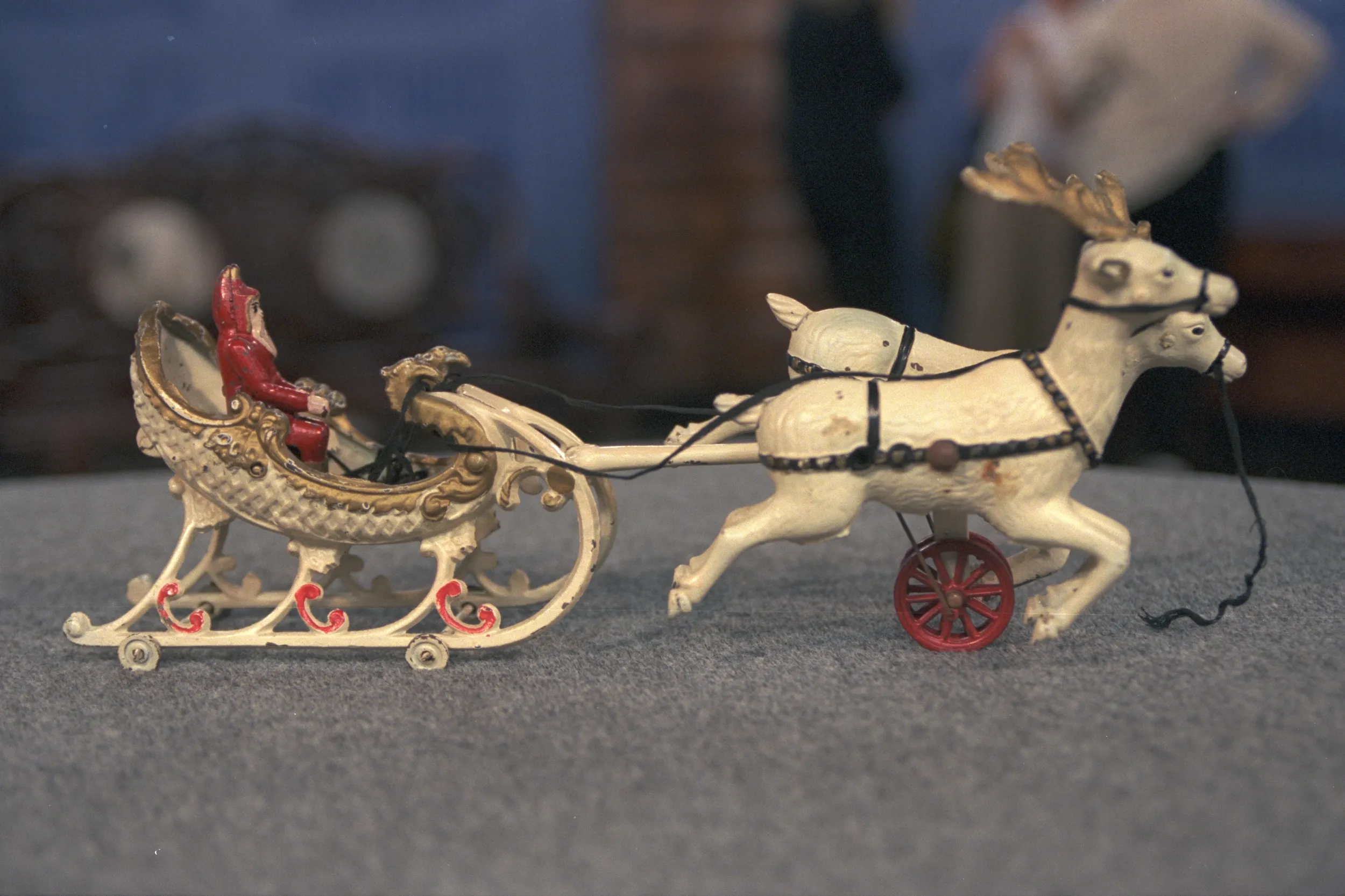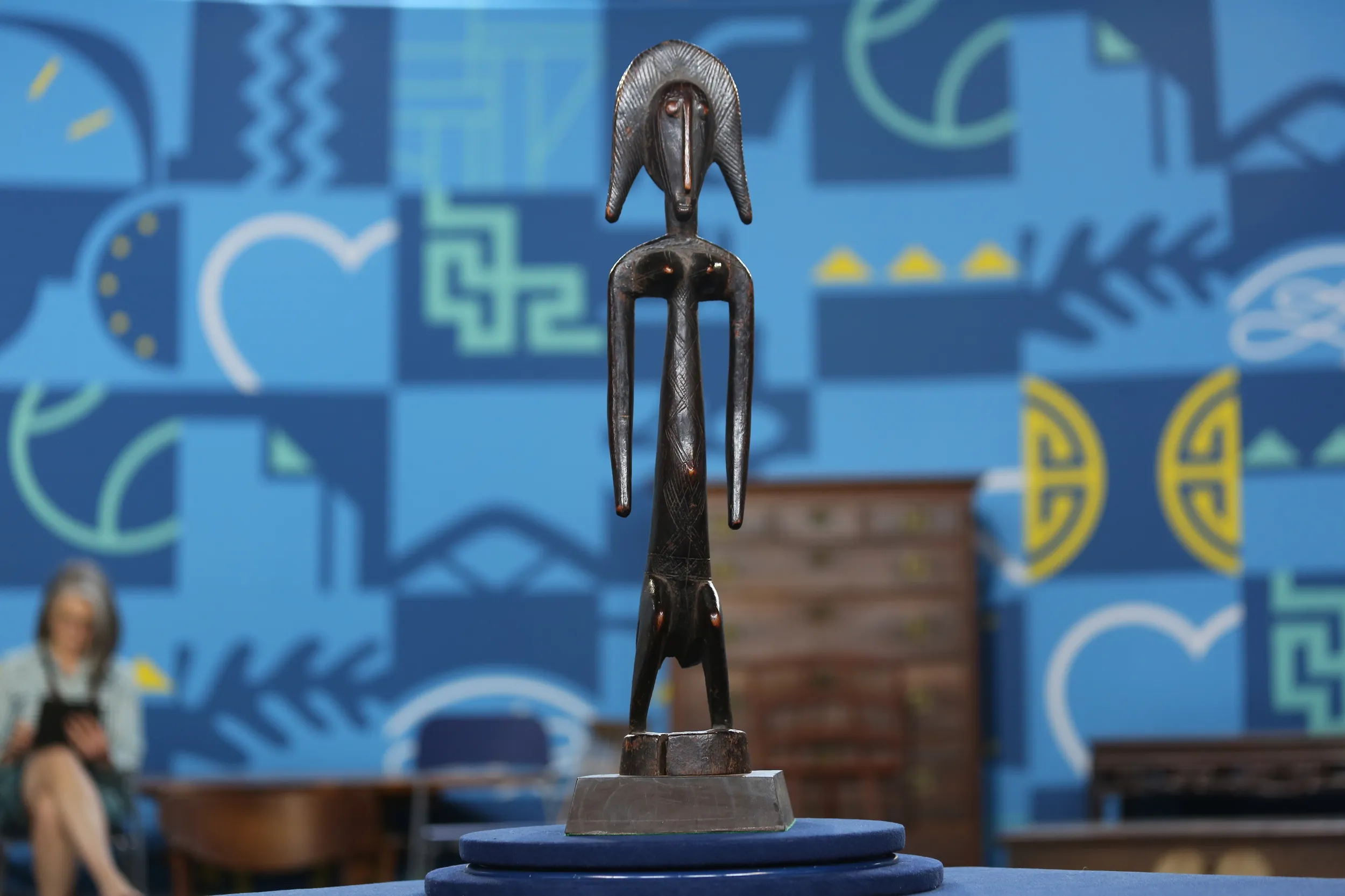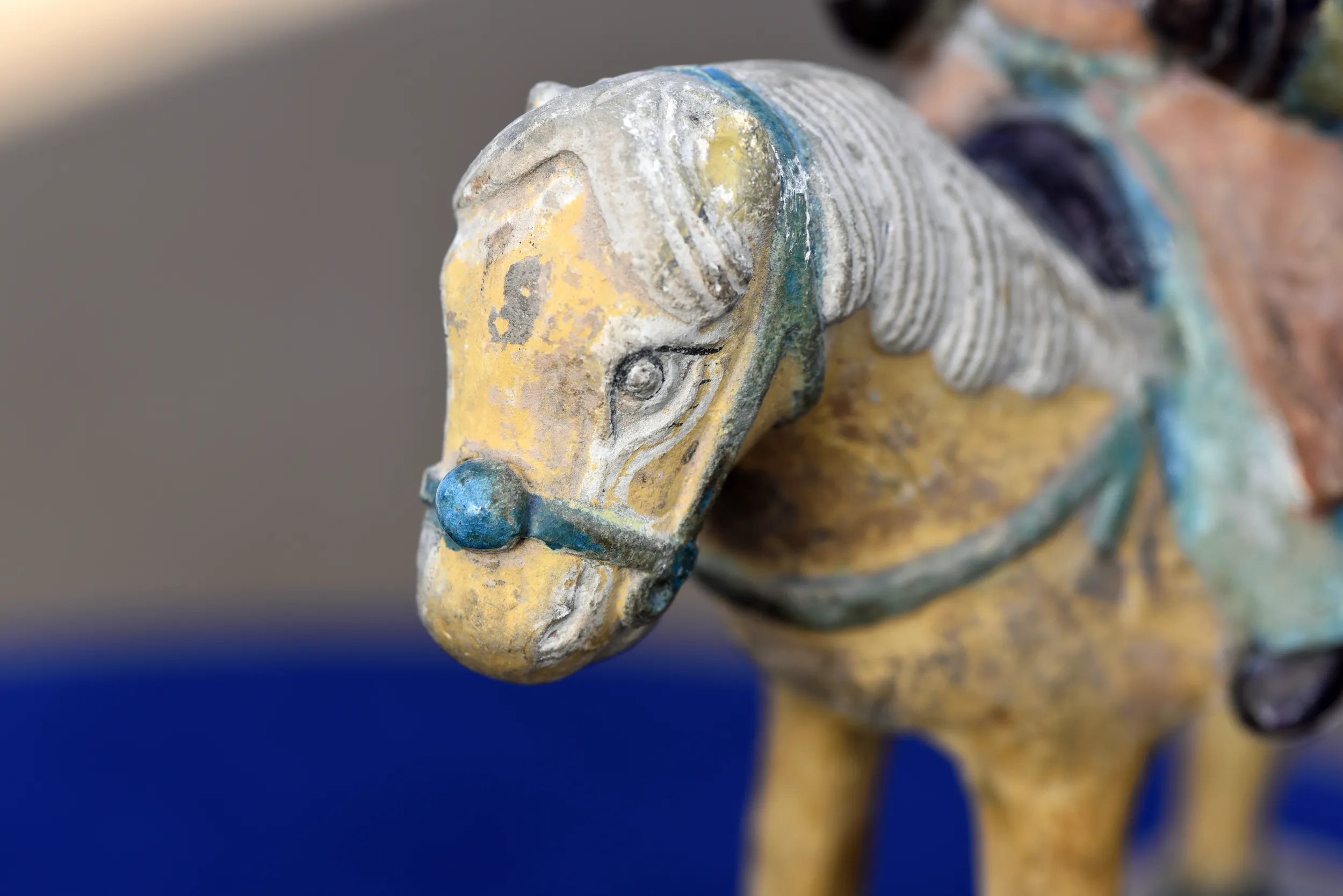GUEST: My dad's grandmother traveled to China in the 1920s. She came back with these horses, and my grandparents had these cases built for them. When my grandparents passed away, my dad and my mom moved into the house, and they raised my brother and I in that same house. So they've just been displayed in that house in the living room... Forever. (laughs)
APPRAISER: So, these... These are a part of your family.
GUEST: Yeah.
APPRAISER: They're actually one of the earliest examples of mass production.
GUEST: Oh.
APPRAISER: These are tomb figures. Your tomb would be, in a way, a house, and you would be surrounded by objects.
GUEST: Okay, yeah, okay.
APPRAISER: So that when you passed, you could bring things with you into the new life.
GUEST: Gotcha, okay.
APPRAISER: And if you were a wealthy individual, you wanted to have the ability to have a similar lifestyle after you passed.
GUEST: Oh, yeah.
APPRAISER: So you brought with you the trappings of a wealthy life-- attendants, soldiers to protect you, farm animals, all kinds of things, and some beautiful horse figures. These are earthenware figures, and they were produced in molds. They made hundreds of these at a time, thousands at a time.
GUEST: Okay.
APPRAISER: I believe that they used sand molds...
GUEST: Okay.
APPRAISER: ...in order to cast them. This type of a glaze is called fahua. Fahua was invented in the Yuan Dynasty and into the Ming Dynasty. And these figures, I think, date to the early Ming Dynasty.
GUEST: Wow.
APPRAISER: 14th or 15th century.
GUEST: Whoa!
APPRAISER: Number one, the color is the clearest indication. This was a period in the Ming Dynasty, 1368 to 1644, that fahua was really popular. And then it kind of died out.
GUEST: Okay.
APPRAISER: It was no longer really used. Another thing, the shape. You have horse figures, but each period, they look different.
GUEST: Okay.
APPRAISER: And during the Ming Dynasty, they're a little bit more robust.
GUEST: Oh.
APPRAISER: They're thicker. And when your grandmother got them. If you had said, "My father was in China in the 1970s," would've been more doubtful. But 1920s, absolutely. It makes sense-- Shanghai was booming. People were buying things up, bringing them back to the West.
GUEST: Okay.
APPRAISER: The Qing Dynasty had just fallen, 1912, and it was really an, a wild time of growth in China. And suddenly there was a demand for something that had never previously existed, because Chinese people did not want those in their home because they're from a tomb. So there's the association...
GUEST: Right.
APPRAISER: "I don't want ghosts haunting." When these were brought out in the early 20th century and late 19th century, there was a bit of a power gap. The Qing Dynasty was ending, and it became easier for something to take place that maybe the government would not want to take place, which was tomb robbery. So, non-authorized digging of tombs.
GUEST: Right, right.
APPRAISER: There were authorized digs that were taking place. I don't know where these came from.
GUEST: Yeah. (laughs)
APPRAISER: We can't... We can't find that out.
GUEST: Ooh.
APPRAISER: We don't know.
GUEST: Yeah, yeah, yeah, yeah.
APPRAISER: They're in good shape. We do have some restoration, here on the front leg of this fellow.
GUEST: Okay.
APPRAISER: The back leg, the yellows. Tombware figures are not really desirable in China today, because they are...
GUEST: Just because of the history?
APPRAISER: Because of the history.
GUEST: Okay.
APPRAISER: But in the West, they are still desirable. If they were to come to auction today-- as the two, as the set-- they would bring around $800 to $1,200.
GUEST: No! (laughs) You're kidding. Okay, cool. (laughs) Do you want 'em? (laughing): Just kidding. My dad won't let go of 'em. (laughs)
APPRAISER: Come get 'em! (laughs)

